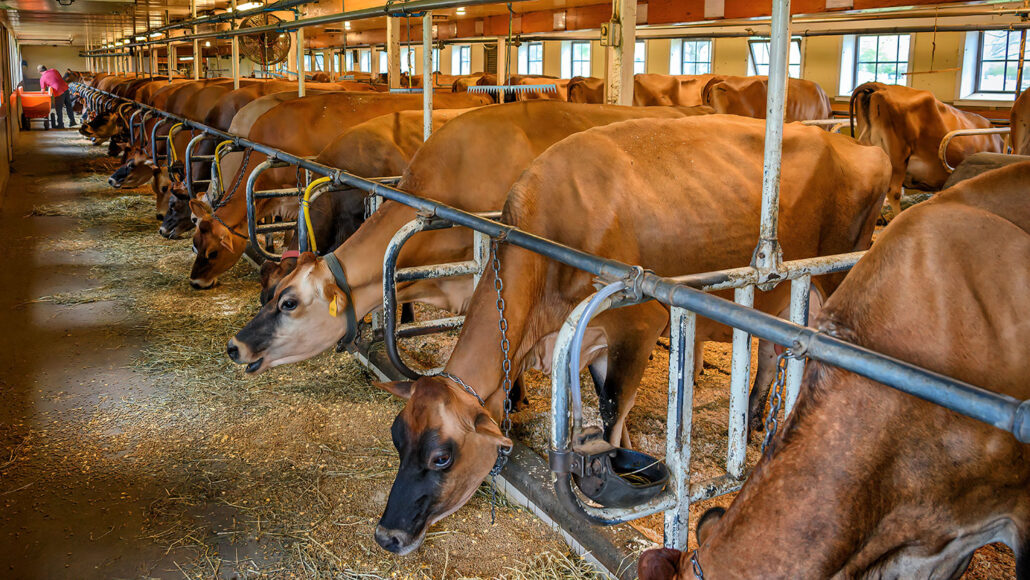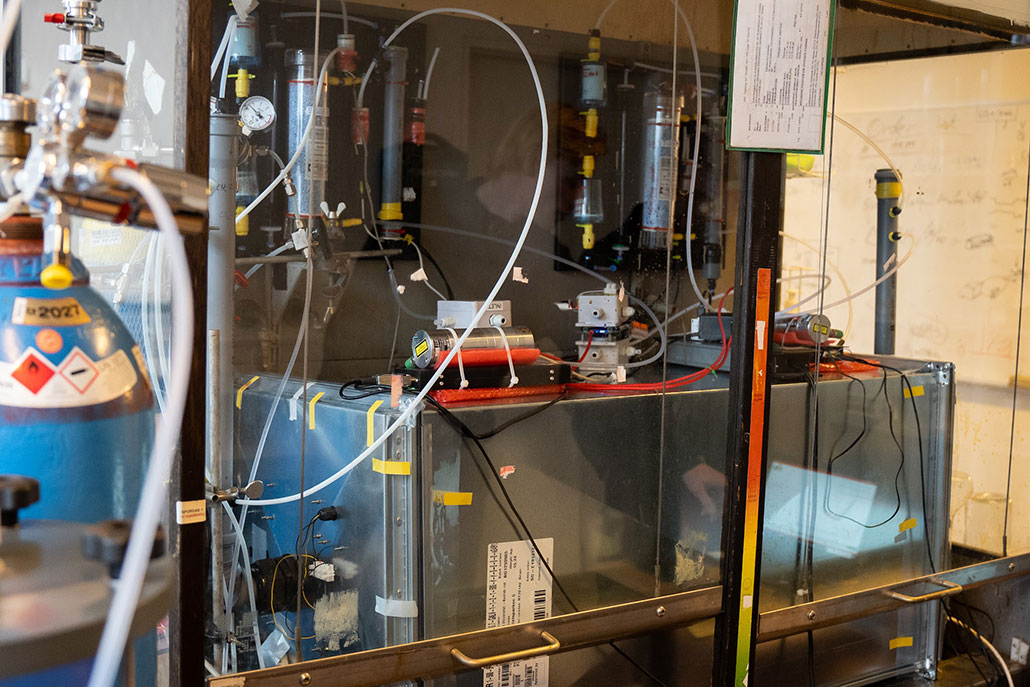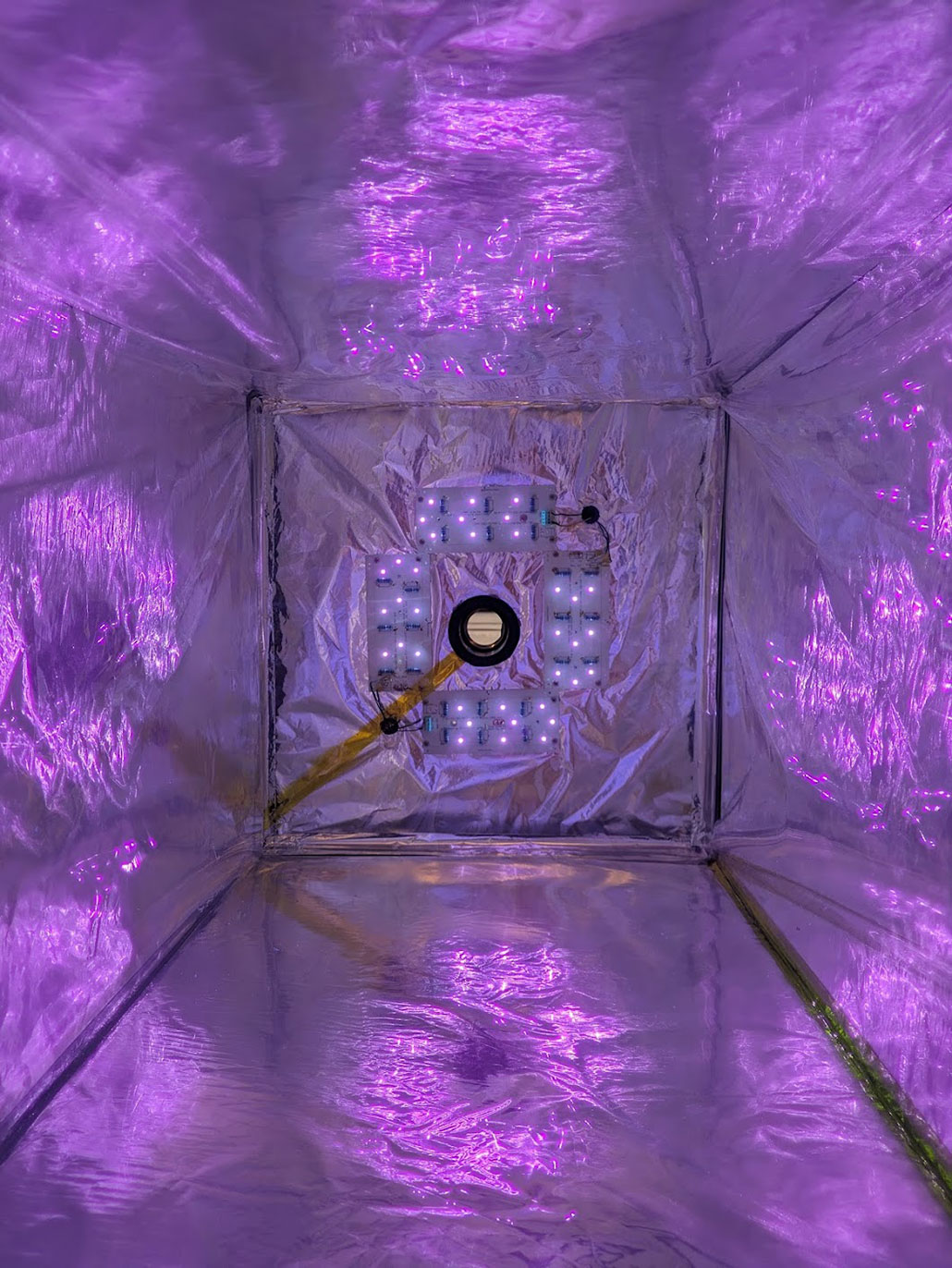Chemists make device to destroy planet-warming methane pollution
It could slash a very potent greenhouse gas from sites such as livestock barns

Cows produce methane from their digestion and decomposing manure. A new device could help clean methane, a potent greenhouse gas, from the air at sites such as these barns — and maybe even landfills.
Diana Robinson Photography/Moment/Getty Images Plus
By Laura Allen
This is another in our series of stories identifying new technologies and actions that can slow climate change, reduce its impacts or help communities cope with a rapidly changing world.
Dairy barns. Hog farms. Rotting trash. What do they have in common? All release methane, an especially powerful planet-warming gas. Now, scientists have found a new method to quash that gas. The approach could slash emissions from places like livestock barns and landfills — and bring the planet one step closer to slowing global warming.
Methane is a carbon atom bound to four hydrogen atoms. A single molecule of it is 80 times better at trapping heat in the atmosphere than a molecule of carbon dioxide. That’s why cutting methane emissions is a key step to decarbonization — and cooling Earth’s climate.
Each methane molecule holds energy within its chemical bonds. If concentrated enough, methane can be used as fuel. In fact, natural gas is mostly methane. Burning it produces useful heat, plus carbon dioxide. But most methane pollution — about three-quarters — is far too dilute to be used as fuel.
A lot of this diffuse methane comes from livestock. Cow burps and rotting manure, for instance, pump out around a third of all the methane linked to human activities.
People have dreamed of pulling methane from the air to use as a resource, says Matt Johnson. He’s a chemist at the University of Copenhagen, in Denmark. But that hasn’t worked, largely due to its diffuse nature. “That’s one of the real problems with methane,” he says. If it’s not concentrated enough to burn, “it’s hard to know how to use it.”
Without a way to capture this methane, scientists have turned their attention to destroying it.
“I invented a method of cleaning air that was able to remove a lot of air pollution,” says Johnson. “People were asking me whether this couldn’t be used to destroy methane,” he says. Unfortunately, it couldn’t.
Methane is stable. It doesn’t dissolve well in water or stick to filters. So many of the traditional ways to clean air don’t work on methane, Johnson explains. Instead, he looked to see if he could mimic one way that nature breaks apart methane high in the atmosphere.
And his team has now made this work.
The methane destroyer
When sunlight hits naturally occurring chlorine (Cl2) in the air, it splits the molecule. This creates two atoms, each with an unpaired electron. They are known as chlorine radicals (Cl·). These radicals are very reactive. They even react with stable methane molecules, breaking them down. But since there are relatively few chlorine radicals around, this natural process tends to eliminate only a small portion of the methane in air.

Johnson and his team have now designed a device to do the same thing. To speed methane’s removal, they boost the concentration of chlorine.

They start with a unit normally used to disinfect home swimming pools. This device uses electricity to split sodium chloride (NaCl) — or table salt — into Cl2 gas and sodium. The researchers then pump the chlorine gas into a steel chamber along with air and methane.
Inside the chamber, LED bulbs shine ultraviolet light onto the chlorine gas. This light breaks those gas molecules into chlorine radicals.
The reactive chlorine radicals cleave off a hydrogen atom from each methane molecule (CH4). This leaves a methyl radical (CH3). It reacts with oxygen in the air, creating two byproducts: carbon monoxide (CO) and CO2. (Since CO2 is a less powerful greenhouse gas than methane, it’s safer to release into outdoor air.)
In the test chamber, the chlorine radicals react with methane’s hydrogen atoms to make hydrochloric acid (HCl). A filter on the outlet of the chamber catches the acid so that its chlorine can be reused. (None of the chlorine gas nor acid leave the device.)
In tests, the new device removed 58 percent of the methane from the air. The team shared its findings online November 20 in Environmental Research Letters.
Future versions
From the outside, the test chamber resembles a piece of steel ductwork that’s one meter (39 inches) long. The researchers plan to build a larger version — one built into a 12-meter (40-foot) long shipping container — for testing at a farm next summer. They’ll adapt the barn’s ventilation system to blow methane-laden air from the animals into the device. Johnson expects this larger system will more efficiently destroy methane than his little lab setup did.
“The technology seems very promising,” says Tingzhen Ming. He’s an engineer at Wuhan University of Technology in China. He, too, works on controlling methane.
Ming sees this Danish system as well suited to fill a gap. It can tackle diffuse methane emitted from places like livestock barns or landfills. What it’s not well suited for, he notes, are more concentrated emissions. It also won’t work for methane emitted into wide open areas, such as a rice field or the Arctic (by thawing permafrost).
Plus, one byproduct of the new device could be useful on its own: hydrogen. This gas can power a fuel cell to make electricity. In the future, Johnson’s team wants to harness that hydrogen power. It’s a way to use some of the energy in methane, he says. Another green upgrade, Johnson says, would be to directly capture the CO2 leaving the new system.
These three steps — slashing methane, directly capturing carbon and harnessing hydrogen for use as an energy source — could go a long way to decarbonizing meat and dairy production, Johnson says.
But globally, notes Ming, we have to do more than address methane emissions from barns. Countries need to make it a priority to cut the release of both CO2 and methane, he says.







